Interview: Dan Beecham on underwater filmmaking and Blue Planet 2
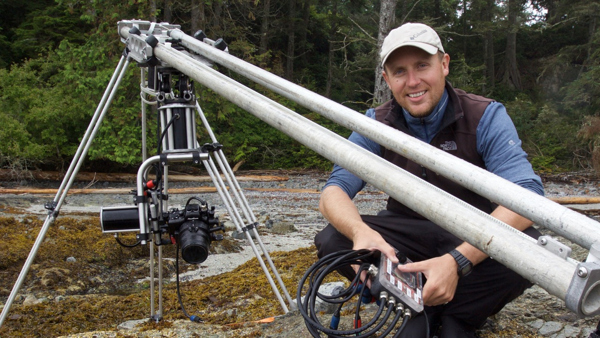
Wildlife camera operator Dan Beecham was the recipient of the BBC’s NHU bursary scheme and, over the past couple of years, has spent over 500 days in the field, working on the forthcoming Blue Planet 2 series. The series premiered at on 27 September at an invitation only event in London and is due to go to air (in the UK) on BBC One at 8pm on Sunday 29 October. It will showcase both unique animal behaviors and innovative new technology. Here is the series’ prequel:
Wetpixel were able to catch up with Dan and asked him a few questions about filming for the series and the state of the art in wildlife filmmaking.
Wetpixel: Hi Dan, how long have you been working as a wildlife and underwater camera operator?
Dan: I’ve been working as a camera operator for just over ten years now — for a long time I was a shooter for the Save Our Seas Foundation, where I first started getting to grips with big cameras and learning the trade. It’s only been in the last few years that I really started getting involved in the kind of productions that I’ve wanted to be working on since I was young. I went freelance from SOSF a few years ago and was lucky enough to get the bursary towards the end of 2014, which saw me relocating from my base in Cape Town to Bristol, to start work full time on the series.
Wetpixel: How did you get the bursary? I would imagine that there are plenty of the Wetpixel community that are somewhat jealous! Can you give any advice to aspirant underwater camera operators?
Dan: I applied for the bursary on-line the same as many people, then went for an interview in Bristol with the series producer. I didn’t know anyone at the BBC at this time, so I honestly wasn’t expecting to get the position at all. I did think it would be a good way just to get inside the building and start talking to everyone on the series and hopefully this might lead to getting some work. It was (and still is) such a shock to get the position, I think it came down to luck as much as anything. I get asked now and again how to get into the industry, and it’s a really hard question to answer as absolutely every cameraman I know has a different story about how they got in.
Look out for future opportunities such as the bursary, but also look into positions that come up more frequently at equipment rental facilities, this can be a good way to start getting to know people. Other than that, just get out and shoot, but don’t simply aim to shoot pretty or well composed shots, that’s easy – try and shoot a short story that demonstrates your ability to build a sequence effectively.
Wetpixel: Technology has played a role in this production. What format were you filming in? I assume that a variety of cameras were used, but was there one format that was preferred?
Dan: The RED Dragon was the go-to camera for the series. It has ended up being used on the majority of the big natural history productions. Many of the NHU camera operators I speak to have other preferences — sync cameramen prefer cameras such as the Varicam or the FS7, some long lens cameramen prefer the Amira because of the look it generates, the ergonomics and the robustness of it. The RED is the only camera that can fill all of these roles because of how modular it is – across the series it was used on gimbals, in underwater housings, in the Cineflex, on drones, in over-the-shoulder configurations etc etc, I think it’s for this reason mainly that it’s so widely used. Other cameras were used as well – Sony A7S/ A7S2 cameras for low-light work, Phantom 4K Flex super slow-mo, GoPros now and again too!
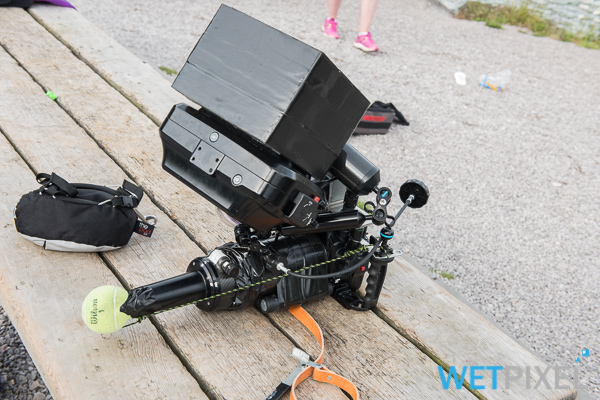
Wetpixel: Can you tell us about the “Scope”?
Dan: The series built custom-made “scope” lenses that allow you to get very close to small subjects, but are still wide angled. They have very small front elements, so tiny subjects fill the frame yet you can still see the background, giving the subject an amazing sense of place that would otherwise be lost working with traditional macro lenses. They make the viewer feel as is they’ve been shrunk down to the size of a small critter, so you’re really immersed in this macro world. Lenses like these are commonly used to tell natural history stories on land and have been for many years, but are relatively new to underwater work. There were a few technological challenges involved in getting them working, mostly with the optics - but it was worth it, I think they succeeded in giving some of the episodes a really fresh new look.
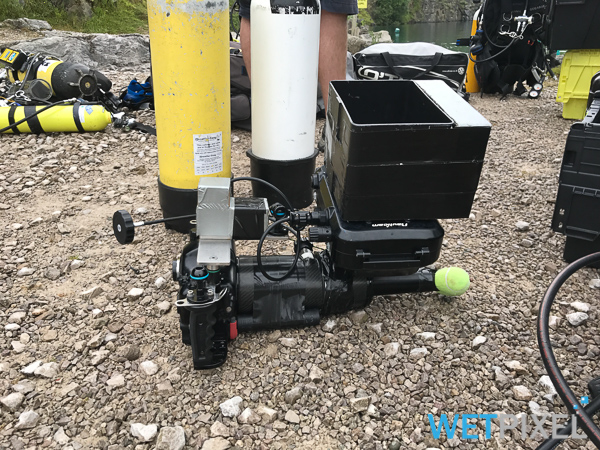
Wetpixel: What is your camera of choice?
Dan: Tough question! As I said, the RED Dragon was the go-to camera for the series and I worked with it extensively over the two years – for the most part without any issues. However, I personally own a Sony F55 and Gates housing for it. I still prefer the image that comes out of the F55 over the RED and even though the RAW files can be unwieldy due to the massive data rate, I feel it’s worth it. This is especially the case for certain situations where you may spend weeks trying to get in the right place at the right time to document an event — if/when it eventually happens I’ll take as much data as I can get! I got into the F55 at a time when the RED Dragon hadn’t been released yet and I’d personally had some reliability issues with the older RED Epics that had skunked some shoots. I’m based in Cape Town and at the time there was no tech support for RED cameras locally (this has now changed) and there’s always been great support for Sony cameras just a five-minute drive from my house there, so that all helped push me toward Sony. Ultimately the proof is in the pudding - I’ve seen finished productions shot on each camera — both of which looked great, which is ultimately all that matters.
I like the look of the new Panasonic EVA1 for underwater work. The dual native ISO being a very attractive feature, plus I prefer working with a Super-35mm sensor for natural history work. I may go down this route soon — once the camera is out and people have worked with it a bit more.
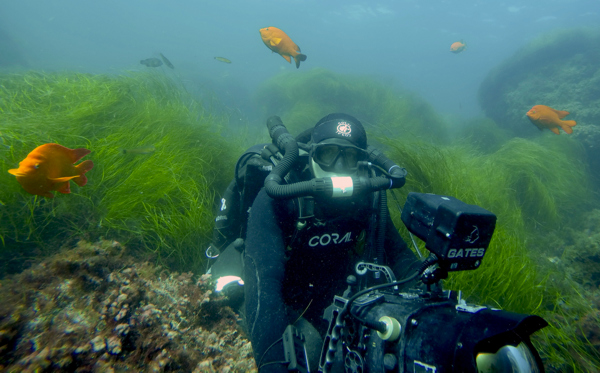
Wetpixel: I remember that in the specifications for the bursary, the BBC was seeking people that were comfortable using rebreathers. Did you use them while filming? How do you see new diving technology affecting the ability to capture new and different shots or behaviors?
Dan: I used rebreathers a lot on the series, both for sequences on the ‘Reef’ and ‘Green Seas’ films where we needed to be doing long dives, but I also used them for other episodes when working with big animals and we were trying to reduce disruption to the animals and the behavior as much as possible. In both of these ways they’ve really revolutionized the way we work underwater. I’ve personally been using rebreathers since 2005, and as such I’m pretty comfortable working on them. I’d urge anyone who wants to use them for filming or photography to get their hours up and do plenty or training before looking to combine the use of rebreathers and cameras.
Wetpixel: Another technological advance since Blue Planet 1 is the availability of affordable drones. How much were these used in Blue Planet 2?
Dan: Absolutely, these made a big difference to the production. They were used in a few ways, in particular to grab quick introductory shots to establish the location of a sequence — in a way that without drones, it would have been prohibitively expensive and logistically too complicated for just a couple of shots. These couple of shots can make a big difference to establish a sequence. But also they allowed us to do work documenting behavior in very remote locations, that again getting helicopters to would have been prohibitively expensive. A few drone shots can add so much to an underwater sequence, as you’ll have already seen from the prequel.
Wetpixel: Where did you film during the making of the series?
Dan: Across the two years I worked on the series I personally went to a number of countries - French Polynesia, Brazil, Costa Rica, Sri Lanka, Australia, Norway, Seychelles and Japan to name a few. I read that in total the series filmed in 39 countries!
Wetpixel: What did you film?
Dan: I can’t talk too much about the specifics of the behavior that I filmed, you’ll have to wait to watch the series to see (no one likes spoilers ;-). My work was across all of the episodes apart from the ‘DEEP’ episode, but predominately I worked on the opening episode, REEF and COASTS. I started off assisting other camera operators and taking a second camera role on shoots and then advanced to being the main cameraman on shoots. This is what the bursary is all about - it’s a big call for a producer to take a risk on a new camera operator that doesn’t have a reputation in the industry, even if you might have a cracking showreel to show your skills. I got to work with lots of the new tech the series developed, including the scopes, the “megadome” and a 3-axis underwater motion-control timelapse rig that the series built. This was all great experience and fun to be working with new gear - working out how to get the most out of it – quite a challenge.
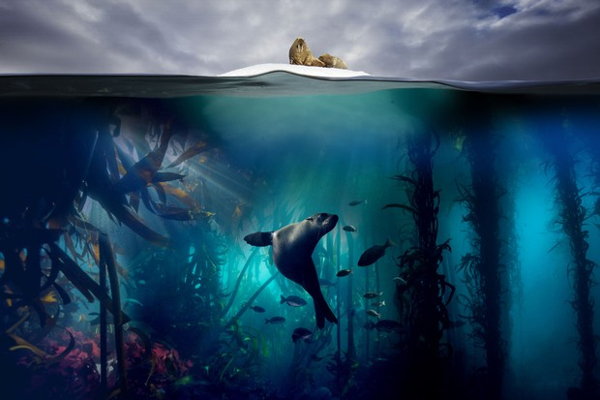
Wetpixel: Was there any specific things that you saw or filmed that fascinated you? What was your favorite event during the filming?
Dan: What I really get a kick out of is shooting something new and exciting — a newly discovered behavior or a species that’s not been worked with much. I love the challenge of working out how something ticks and the ways to film it — that’s where the challenge lies for me. I get such a rush when I look in the monitor and I see something that looks new — unlike any footage I’ve seen before – and knowing that it’s going to help tell an interesting and surprising natural history story effectively. There were a couple of sequences in particular when I got this feeling, one about sea-lions in the “Coasts” episode and one about Giant Trevallies in the opening episode. What they were doing you’ll have to wait and see ;-)
Wetpixel: Did you work with Sir David Attenborough? Was he easy to work with?
Dan: I was lucky enough to go away on a shoot with Sir David to Florida, where I was assisting camera operator Gavin Thurston, who has worked with David many times in the past. We were filming the introductory shots for the series where David is at sea, on a ship. It was a really special week and a massive privilege to get away with him and get to have a glass of wine with him. He was a nicer person in real life than you would think is even possible - so genuine and so passionate — he still works so hard and wants the best for the production.
Wetpixel: What was the most important thing that you learned whilst making the series? What advice would you offer to an aspirant filmmaker?
Dan: I learnt a lot over the two years, especially about patience and determination from some of the other shooters I worked with. If it’s your dream to be in this kind of industry, just don’t give up. It’s taken me over ten years to get to where I am now and honestly, I’ve still got a long way to go to get to where I want to be — and I’ve had a couple of great stepping stones fall in my path along the way. As long as you’re prepared for a long road, you’ll make it. Also, learning to sleep on planes is an important skill!
Wetpixel: The BBC seems to increasingly rely on freelance staff. How does this impact on the way they make films?
Dan: There aren’t really any full time camera crew at the BBC as far as I’m aware. Occasionally camera operators work on series’ where they are producers as well as shooters, so are full time, but other than that and people on the bursary like myself there aren’t any full timers.
I think more than ever there are opportunities to get involved in big natural history productions — this series for example used lot of local camera operators – people who know their area very well, or are based somewhere where they can be on stand-by, waiting for a big event to start happening and react quickly to capture some big moments. If you’re a person who lives in an extraordinary place and have found a great behavior, don’t be in a rush to film it and throw the footage up on social media, as is the current trend. Although its great that you want to share the footage with the world in this way, you could find a way to make it something bigger, more rewarding and so much more special. Don’t forget, if you’re the one who’s worked out how this species / behavior / natural event works, you hold all the cards.
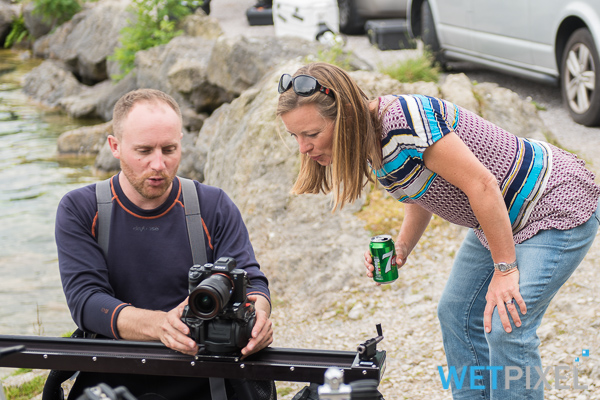
Wetpixel: I assume that your tenure as the NHU bursary recipient is now over. What are your plans for the future? Do you have any projects that you are involved with?
Dan: I finished working on the series in a full time capacity in March, so have been freelance back then have managed to get involved in a couple of other projects, one being the main BBC series for 2019, and a big series for Nat Geo. Simply because of the timeframes involved in making these kind of productions, there is always the next production to be working on.
Wetpixel: Filmmakers, particularly with productions like Blue Planet 2, have the ability to highlight environmental issues. Does Blue Planet 2 have a call to action?
Dan: Indeed it does. Each episode has a strong conservation message, plus the final episode is focused on the future of the oceans – including conservation threats and initiatives . Its great to be able to get an hour of prime time programming dedicated to this subject.
Wetpixel: How do you see the state of the world’s ocean? What can underwater image makers do to help?
Dan: I’ve been diving for over twenty years and in my time I’ve seen massive changes in the ocean, it worries me to think what the state of the oceans and the rest of the natural world will be in another twenty years time. I went to some very remote locations over the last two years, but the one thing you can’t escape from is plastic, and I feel this issue has really come to a head in the last couple of years. I think we’re only just starting to see how bad the issue is going to get as well as the long term effects it is going to have on the world’s oceans and us as a knock-on result. What’s great though is we’re seeing the start of a massive ground swell of awareness against the use of plastics and further awareness of other marine conservation issues. We now just need the general public to follow suit. Little things add up — the choices you make as a consumer every day make more difference to the world that a political vote you cast every four years, so make those choices count. Don’t be afraid to say to a bar/restaurant/shop that they should stop using plastics, if one person says something per day they may not listen, but if dozens do they’ll make a change and people will follow the trend. Give yourself more time in your day to use zero packaging supermarkets. Very importantly eat less meat. Underwater image-makers are on the front line of this battle, as we see the effects when we’re in the water — share your stories and images - both positive and negative with friends and family as much as possible to them connect with a world they are less fortunate to see than we are.
Wetpixel: Where is your favorite dive site? What is your favorite (underwater) subject?
Dan: I got to go to some great dive sites on my travels for BP2, but I feel very fortunate to be able to say that the coastal kelp forest around Cape Town – my adopted home - is probably my favorite place to be in the ocean. It’s such a wilderness still, with a wealth of stories — a couple of which made it into the series as you’ll see, so it’s always an exciting place to be, with a stunning color palette. Plus, you never quite know what’s around the next kelp frond — keeps you on your toes!
Wetpixel: Thank you Dan and all the very best!